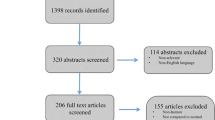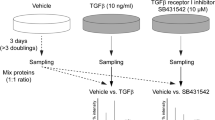Abstract
Prolactinomas are the most common secretory pituitary tumors; however, their pathogenesis is unclear. In order to explore the pathogenesis of prolactinomas, we used fiber-optic BeadArray to examine gene expression profiles in five prolactinomas compared with three normal pituitaries. Three down-regulated genes and one up-regulated gene were chosen for validation by quantitative real-time reverse-transcription polymerase chain reaction. We then performed pathway analysis on the identified differentially expressed genes using the Kyoto Encyclopedia of Genes and Genomes. Array analysis showed significant increases in the expression of 27 genes and 3 expressed sequence tags (ESTs), and decreases in 182 genes and 9 ESTs, including HIG1 domain family, member 1B, S100 calcium binding protein A9, angiopoietin 2, interleukin 8, hydroxyprostaglandin dehydrogenase 15-(NAD), suppression of tumorigenicity18, and WNT inhibitory factor 1. Pathway analysis showed that the P53 and GnRH signaling pathways may play an important role in tumorigenesis of prolactinomas. Our data suggest fiber-optic BeadArray combined with pathway analysis of differential gene expression profile appears to be a valid approach for investigating the pathogenesis of tumors.

Similar content being viewed by others
References
R. Krysiak, B. Okopien, B. Marek, W. Szkrobka, Prolactinoma. Przegl. Lek. 66(4), 198–205 (2009)
S.L. Asa, S. Ezzat, The pathogenesis of pituitary tumours. Nat. Rev. Cancer 2(11), 836–849 (2002)
S.L. Asa, S. Ezzat, The cytogenesis and pathogenesis of pituitary adenomas. Endocr. Rev. 19(6), 798–827 (1998)
V. Herman, J. Fagin, R. Gonsky, K. Kovacs, S. Melmed, Clonal origin of pituitary adenomas. J. Clin. Endocrinol. Metab. 71(6), 1427–1433 (1990)
J.M. Alexander, B.M. Biller, H. Bikkal, N.T. Zervas, A. Arnold, A. Klibanski, Clinically nonfunctioning pituitary tumors are monoclonal in origin. J. Clin. Invest. 86(1), 336–340 (1990)
A. Spada, G. Mantovani, A. Lania, Pathogenesis of prolactinomas. Pituitary 8(1), 7–15 (2005)
S. Mao, G. Dong, Discovery of highly differentiative gene groups from microarray gene expression data using the gene club approach. J. Bioinform. Comput. Biol. 3(6), 1263–1280 (2005)
C.O. Evans, A.N. Young, M.R. Brown, D.J. Brat, J.S. Parks, A.S. Neish, N.M. Oyesiku, Novel patterns of gene expression in pituitary adenomas identified by complementary deoxyribonucleic acid microarrays and quantitative reverse transcription-polymerase chain reaction. J. Clin. Endocrinol. Metab. 86(7), 3097–3107 (2001)
D.G. Morris, M. Musat, S. Czirjak, Z. Hanzely, D.M. Lillington, M. Korbonits, A.B. Grossman, Differential gene expression in pituitary adenomas by oligonucleotide array analysis. Eur. J. Endocrinol. 153(1), 143–151 (2005)
C.O. Evans, C.S. Moreno, X. Zhan, M.T. McCabe, P.M. Vertino, D.M. Desiderio, N.M. Oyesiku, Molecular pathogenesis of human prolactinomas identified by gene expression profiling, RT-qPCR, and proteomic analyses. Pituitary 11(3), 231–245 (2008)
K.J. Livak, T.D. Schmittgen, Analysis of relative gene expression data using real-time quantitative PCR and the 2(-Delta Delta C(T)) method. Methods 25(4), 402–408 (2001)
N. Denko, C. Schindler, A. Koong, K. Laderoute, C. Green, A. Giaccia, Epigenetic regulation of gene expression in cervical cancer cells by the tumor microenvironment. Clin. Cancer Res. 6(2), 480–487 (2000)
F. Shibata, K. Miyama, F. Shinoda, J. Mizumoto, K. Takano, H. Nakagawa, Fibroblast growth-stimulating activity of S100A9 (MRP-14). Eur. J. Biochem. 271(11), 2137–2143 (2004)
I. Marenholz, C.W. Heizmann, G. Fritz, S100 proteins in mouse and man: from evolution to function and pathology (including an update of the nomenclature). Biochem. Biophys. Res. Commun. 322(4), 1111–1122 (2004)
K. Arai, T. Yamada, R. Nozawa, Immunohistochemical investigation of migration inhibitory factor-related protein (MRP)-14 expression in hepatocellular carcinoma. Med. Oncol. 17(3), 183–188 (2000)
K. Arai, T. Teratani, R. Nozawa, T. Yamada, Immunohistochemical investigation of S100A9 expression in pulmonary adenocarcinoma: S100A9 expression is associated with tumor differentiation. Oncol. Rep. 8(3), 591–596 (2001)
K. Arai, T. Teratani, R. Kuruto-Niwa, T. Yamada, R. Nozawa, S100A9 expression in invasive ductal carcinoma of the breast: S100A9 expression in adenocarcinoma is closely associated with poor tumour differentiation. Eur. J. Cancer 40(8), 1179–1187 (2004)
A. Hermani, J. Hess, B. de Servi, S. Medunjanin, R. Grobholz, L. Trojan, P. Angel, D. Mayer, Calcium-binding proteins S100A8 and S100A9 as novel diagnostic markers in human prostate cancer. Clin. Cancer Res. 11(14), 5146–5152 (2005)
K. Arai, S. Takano, T. Teratani, Y. Ito, T. Yamada, R. Nozawa, S100A8 and S100A9 overexpression is associated with poor pathological parameters in invasive ductal carcinoma of the breast. Curr. Cancer Drug Targets 8(4), 243–252 (2008)
G. Zadeh, A. Guha, Neoangiogenesis in human astrocytomas: expression and functional role of angiopoietins and their cognate receptors. Front. Biosci. 8, e128–e137 (2003)
H.L. Wang, C.S. Deng, J. Lin, D.Y. Pan, Z.Y. Zou, X.Y. Zhou, Expression of angiopoietin-2 is correlated with vascularization and tumor size in human colorectal adenocarcinoma. Tohoku J. Exp. Med. 213(1), 33–40 (2007)
S. Nag, N. Nourhaghighi, R. Venugopalan, S.L. Asa, D.J. Stewart, Angiopoietins are expressed in the normal rat pituitary gland. Endocr. Pathol. 16(1), 67–73 (2005)
B. Hu, P. Guo, Q. Fang, H.Q. Tao, D. Wang, M. Nagane, H.J. Huang, Y. Gunji, R. Nishikawa, K. Alitalo et al., Angiopoietin-2 induces human glioma invasion through the activation of matrix metalloprotease-2. Proc. Natl. Acad. Sci. USA 100(15), 8904–8909 (2003)
A.S. Haqqani, J.K. Sandhu, H.C. Birnboim, Expression of interleukin-8 promotes neutrophil infiltration and genetic instability in mutatect tumors. Neoplasia 2(6), 561–568 (2000)
D.S. Bischoff, J.H. Zhu, N.S. Makhijani, A. Kumar, D.T. Yamaguchi, Angiogenic CXC chemokine expression during differentiation of human mesenchymal stem cells towards the osteoblastic lineage. J. Cell. Biochem. 103(3), 812–824 (2008)
K. Xie, Interleukin-8 and human cancer biology. Cytokine Growth Factor Rev. 12(4), 375–391 (2001)
V.L. Green, S.L. Atkin, V. Speirs, R.V. Jeffreys, A.M. Landolt, B. Mathew, L. Hipkin, M.C. White, Cytokine expression in human anterior pituitary adenomas. Clin. Endocrinol. (Oxf.) 45(2), 179–185 (1996)
M.E. Suliman, J.A. Royds, L. Baxter, W.R. Timperley, D.R. Cullen, T.H. Jones, IL-8 mRNA expression by in situ hybridisation in human pituitary adenomas. Eur. J. Endocrinol. 140(2), 155–158 (1999)
T.J. Jang, Y.S. Ji, K.H. Jung, Decreased expression of 15-hydroxyprostaglandin dehydrogenase in gastric carcinomas. Yonsei Med. J. 49(6), 917–922 (2008)
K.G. Coggins, A. Latour, M.S. Nguyen, L. Audoly, T.M. Coffman, B.H. Koller, Metabolism of PGE2 by prostaglandin dehydrogenase is essential for remodeling the ductus arteriosus. Nat. Med. 8(2), 91–92 (2002)
I. Wolf, J. O’Kelly, T. Rubinek, M. Tong, A. Nguyen, B.T. Lin, H.H. Tai, B.Y. Karlan, H.P. Koeffler, 15-Hydroxyprostaglandin dehydrogenase is a tumor suppressor of human breast cancer. Cancer Res. 66(15), 7818–7823 (2006)
K.S. Yee, V.C. Yu, Isolation and characterization of a novel member of the neural zinc finger factor/myelin transcription factor family with transcriptional repression activity. J. Biol. Chem. 273(9), 5366–5374 (1998)
Y. Jiang, V.C. Yu, F. Buchholz, S. O’Connell, S.J. Rhodes, C. Candeloro, Y.R. Xia, A.J. Lusis, M.G. Rosenfeld, A novel family of Cys-Cys, His-Cys zinc finger transcription factors expressed in developing nervous system and pituitary gland. J. Biol. Chem. 271(18), 10723–10730 (1996)
J. Yang, M.F. Siqueira, Y. Behl, M. Alikhani, D.T. Graves, The transcription factor ST18 regulates proapoptotic and proinflammatory gene expression in fibroblasts. FASEB J. 22(11), 3956–3967 (2008)
B. Jandrig, S. Seitz, B. Hinzmann, W. Arnold, B. Micheel, K. Koelble, R. Siebert, A. Schwartz, K. Ruecker, P.M. Schlag et al., ST18 is a breast cancer tumor suppressor gene at human chromosome 8q11.2. Oncogene 23(57), 9295–9302 (2004)
M.S. Elston, A.J. Gill, J.V. Conaglen, A. Clarkson, J.M. Shaw, A.J. Law, R.J. Cook, N.S. Little, R.J. Clifton-Bligh, B.G. Robinson et al., Wnt pathway inhibitors are strongly down-regulated in pituitary tumors. Endocrinology 149(3), 1235–1242 (2008)
A. Subramanian, P. Tamayo, V.K. Mootha, S. Mukherjee, B.L. Ebert, M.A. Gillette, A. Paulovich, S.L. Pomeroy, T.R. Golub, E.S. Lander et al., Gene set enrichment analysis: a knowledge-based approach for interpreting genome-wide expression profiles. Proc. Natl. Acad. Sci. USA 102(43), 15545–15550 (2005)
B. Vogelstein, D. Lane, A.J. Levine, Surfing the p53 network. Nature 408(6810), 307–310 (2000)
S. Jin, A.J. Levine, The p53 functional circuit. J. Cell Sci. 114(Pt 23), 4139–4140 (2001)
M. Gasco, S. Shami, T. Crook, The p53 pathway in breast cancer. Breast Cancer Res. 4(2), 70–76 (2002)
J. Ying, G. Srivastava, W.S. Hsieh, Z. Gao, P. Murray, S.K. Liao, R. Ambinder, Q. Tao, The stress-responsive gene GADD45G is a functional tumor suppressor, with its response to environmental stresses frequently disrupted epigenetically in multiple tumors. Clin. Cancer Res. 11(18), 6442–6449 (2005)
R. Ohki, J. Nemoto, H. Murasawa, E. Oda, J. Inazawa, N. Tanaka, T. Taniguchi, Reprimo, a new candidate mediator of the p53-mediated cell cycle arrest at the G2 phase. J. Biol. Chem. 275(30), 22627–22630 (2000)
S. Kapoor, Altered expression of the PMAIP1 gene: a major player in the evolution of gastrointestinal and systemic malignancies. Dig. Dis. Sci. 53(10), 2834–2835 (2008)
F. Ruf, M.Y. Fink, S.C. Sealfon, Structure of the GnRH receptor-stimulated signaling network: insights from genomics. Front. Neuroendocrinol. 24(3), 181–199 (2003)
G.Y. Bedecarrats, U.B. Kaiser, Mutations in the human gonadotropin-releasing hormone receptor: insights into receptor biology and function. Semin. Reprod. Med. 25(5), 368–378 (2007)
P.C. Million, C.R. White, M.W. King, P.L. Quirk, J.L. Iovanna, C.C. Quirk, Loss of the protein NUPR1 (p8) leads to delayed LHB expression, delayed ovarian maturation, and testicular development of a sertoli-cell-only syndrome-like phenotype in mice. Biol. Reprod. 79(4), 598–607 (2008)
K.H. Burns, M.M. Matzuk, Minireview: genetic models for the study of gonadotropin actions. Endocrinology 143(8), 2823–2835 (2002)
Author information
Authors and Affiliations
Corresponding author
Rights and permissions
About this article
Cite this article
Jiang, Z., Gui, S. & Zhang, Y. Analysis of differential gene expression by fiber-optic BeadArray and pathway in prolactinomas. Endocr 38, 360–368 (2010). https://doi.org/10.1007/s12020-010-9389-2
Received:
Accepted:
Published:
Issue Date:
DOI: https://doi.org/10.1007/s12020-010-9389-2




